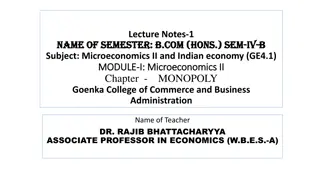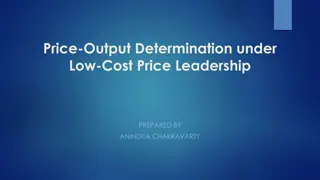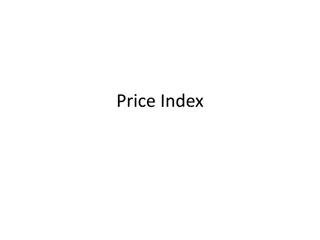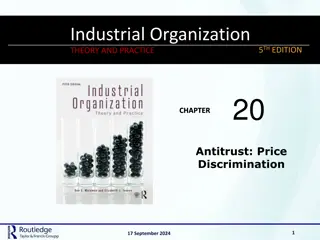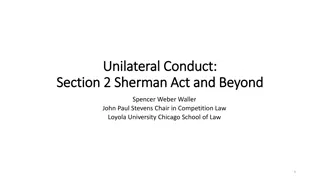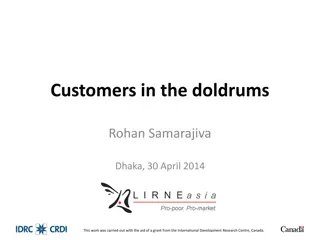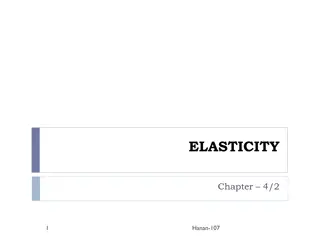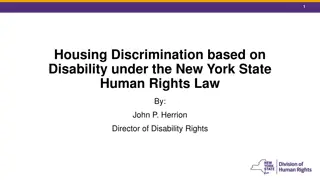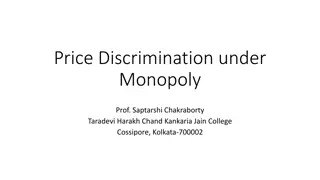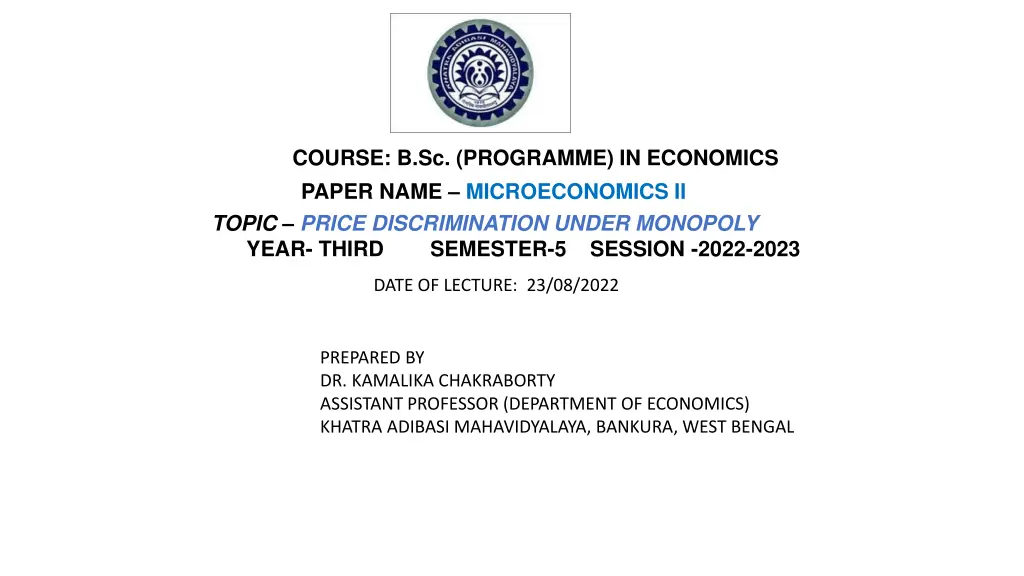
Understanding Price Discrimination in Monopoly Economics
Explore the concept of price discrimination under monopoly in economics, where a single seller controls pricing strategies to maximize profit. Learn about the types of price discrimination - personal, geographical, and based on use - along with degrees like first-degree, second-degree, and third-degree. Discover how monopolists adopt different strategies to charge varying prices to different consumer groups, ultimately aiming to exploit consumer willingness to pay.
Download Presentation

Please find below an Image/Link to download the presentation.
The content on the website is provided AS IS for your information and personal use only. It may not be sold, licensed, or shared on other websites without obtaining consent from the author. If you encounter any issues during the download, it is possible that the publisher has removed the file from their server.
You are allowed to download the files provided on this website for personal or commercial use, subject to the condition that they are used lawfully. All files are the property of their respective owners.
The content on the website is provided AS IS for your information and personal use only. It may not be sold, licensed, or shared on other websites without obtaining consent from the author.
E N D
Presentation Transcript
COURSE: B.Sc. (PROGRAMME) IN ECONOMICS PAPER NAME MICROECONOMICS II TOPIC PRICE DISCRIMINATION UNDER MONOPOLY YEAR- THIRD SEMESTER-5 SESSION -2022-2023 DATE OF LECTURE: 23/08/2022 PREPARED BY DR. KAMALIKA CHAKRABORTY ASSISTANT PROFESSOR (DEPARTMENT OF ECONOMICS) KHATRA ADIBASI MAHAVIDYALAYA, BANKURA, WEST BENGAL
Price discrimination and its types Monopoly is a market where there is a single seller of a product called monopolist. The monopolist has control over pricing, demand, and supply decisions He, thus, sets prices in a way, so that maximum profit can be earned. The monopolist often charges different prices from different consumers for the same product. This practice of charging different prices for identical product is called price discrimination. There are three types of price discrimination
Types of Price discrimination (contd.) i. Personal: This is a type of price discrimination where different prices are charged from different individuals according to the level of income of consumers as well as their willingness to purchase a product. For example, a doctor charges different fees from poor and rich patients. ii. Geographical: Geographical price discrimination takes place when the monopolist charges different prices at different places for the same product. This type of discrimination is also called dumping. iii. On the basis of use: This happens when different prices are charged according to the use of a product. For instance, an electricity supply board charges lower rates for domestic consumption of electricity and higher rates for commercial consumption.
Degrees of Price discrimination Degrees of Price discrimination may be classified into 3 categories: i. First-degree Price Discrimination: Refers to a price discrimination in which a monopolist charges the maximum price that each buyer is willing to pay. This is also known as perfect price discrimination as it involves maximum exploitation of consumers. In this, consumers fail to enjoy any consumer surplus. First degree price discrimination is practiced by lawyers and doctors. ii. Second-degree Price Discrimination: Refers to a price discrimination in which buyers are divided into different groups and different prices are charged from these groups depending upon what they are willing to pay. Railways and airlines practice this type of price discrimination. iii. Third-degree Price Discrimination: Refers to a price discrimination in which the monopolist divides the entire market into submarkets and different prices are charged in each submarket. Therefore, third-degree price discrimination is also termed as market segmentation. In this type of price discrimination, the monopolist needs to segment market in a manner, so that there is no possibility of resale of products sold in one market in another market. Moreover, he/she should identify the price elasticity of demand of different submarkets. The groups are divided according to age, sex, and location. For instance, railways charge lower fares from senior citizens. Students get discount/concessions in cinema tickets and tickets for visiting museums, and historical monuments.
Conditions for successful Price discrimination(contd.) Buyers from the low-priced Price discrimination is possible under the following conditions: Control of the seller over the supply of his product. The seller should be able to divide the market into at least two sub-markets (or more). The price-elasticity of the product must be different in different markets. The monopolist charges a high price for those buyers whose price-elasticity of demand is low and lower price for the buyers whose price elasticity of demand is high. No resale of goods should take place from low price market to high price market.
References https://www.economicsdiscussion.net/monopoly/price-discrimination-under-monopoly-types-degrees- and-other-details/3741 https://econtips.com/monopoly-price-discrimination/ https://www.toppr.com/guides/business-economics/determination-of-prices/price-discrimination/





